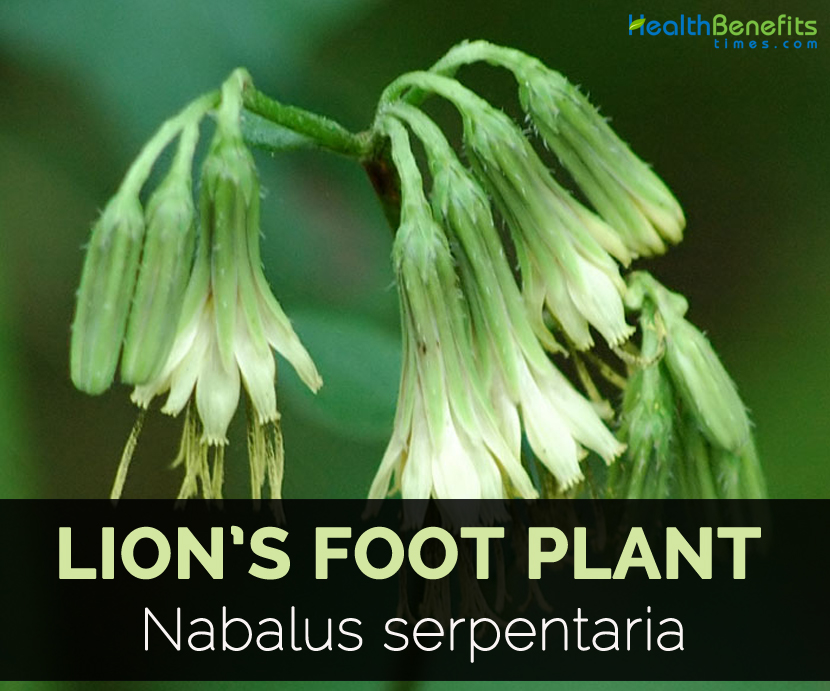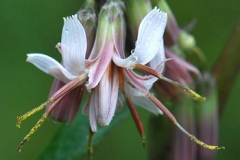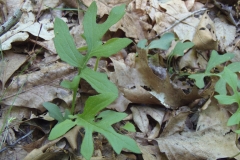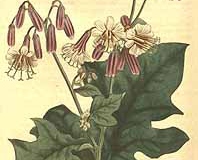| Lion's Foot Plant Quick Facts | |
|---|---|
| Name: | Lion's Foot Plant |
| Scientific Name: | Nabalus serpentaria |
| Name | Lion’s Foot Plant |
|---|---|
| Scientific Name | Nabalus serpentaria |
| Common/English Name | Prenanthes Serpens, Rattlesnake-Root, White Lettuce, Cancer Weed, Canker root, Rattlesnake root, White cankerweed |
| Plant Growth Habit | Perennial plant |
| Root | Branching, tuberous |
| Stem | 1 to 2 meters tall, green or often purplish |
| Leaf | Smooth, thick, deep green |
| Medicinal parts | The whole plant |
| Flower | White or yellowish, 11-14 mm long |
Dose
1 teaspoonful of the granulated root steeped in 1 cup boiling water. Drink cold 1 cupful during the day, a large mouthful at a time. Of the tincture, 10–20 min.
Externally
In case of snake bites, steep the leaves in boiling water and apply as a poultice.
Homoeopathic Clinical
Tincture of whole fresh plant—Constipation, Ophthalmia.
Medicinal uses
- Root decoction is used for treating canker sores, dysentery and diarrhea.
- Drink milky juice to cure snake bite.
- Poultice made from leaves are used as first aid for snake, insect and dog bites.
- Native Americans put powdered root in food for stimulating milk flow after childbirth.
- Apply the leaves steeped in water to wound and change it frequently.
- Root decoction is used for treating rattlesnake bite and dysentery.
References:
http://www.nativeplanttrust.org/documents/87/Nabalusserpentarius.pdf
https://www.mass.gov/files/documents/2016/08/wi/nabalus-serpentarius.pdf
https://www.henriettes-herb.com/eclectic/kings/nabalus.html
https://plants.usda.gov/core/profile?symbol=PRSE
https://www.wildflower.org/plants/result.php?id_plant=pral2
http://www.naturalmedicinalherbs.net/herbs/n/nabalus-serpentarius=lion’s-foot.php
http://ilovehomoeopathy.com/nabalus/
http://medicinalherbinfo.org/000Herbs2016/1herbs/lions-foot/





